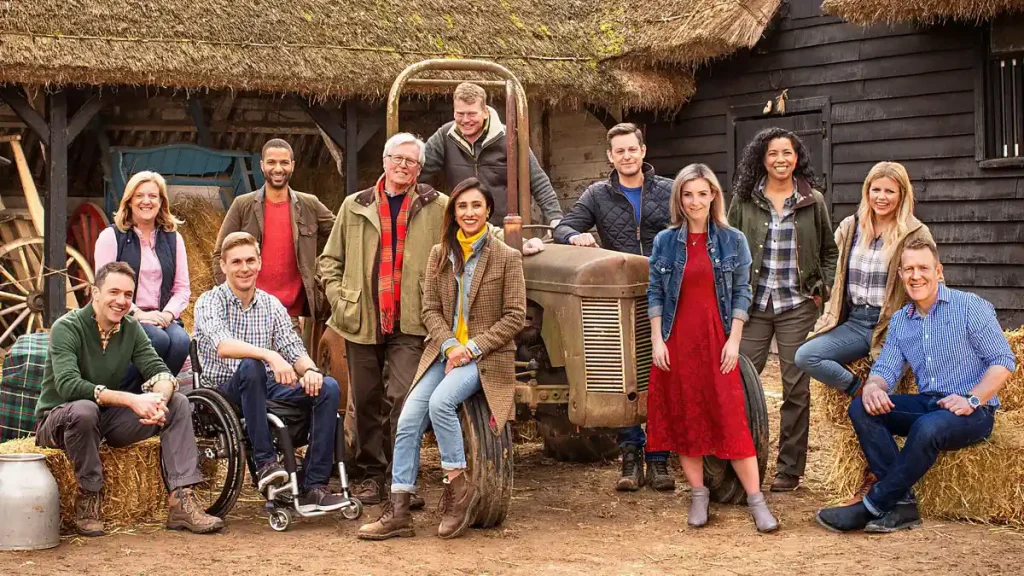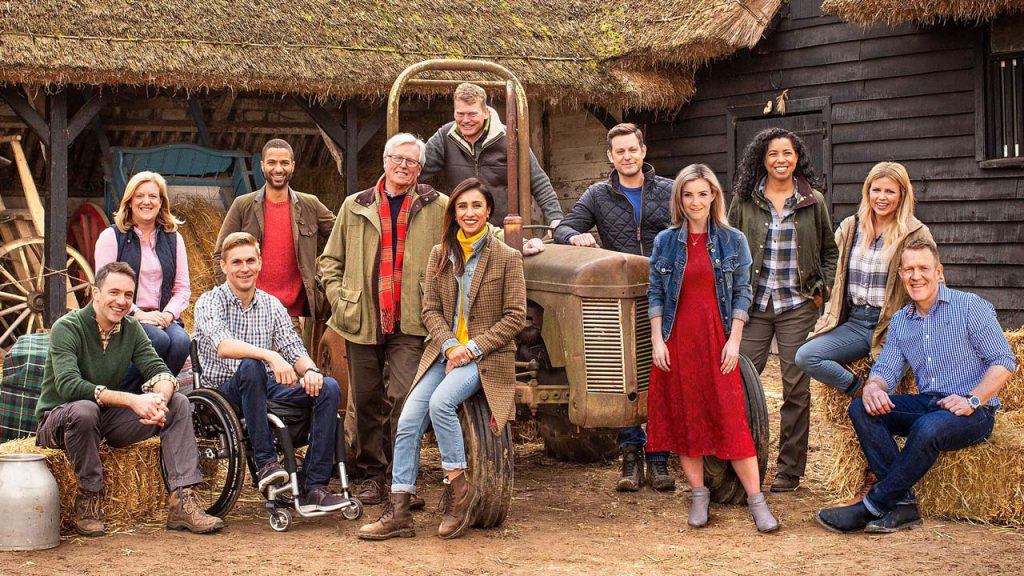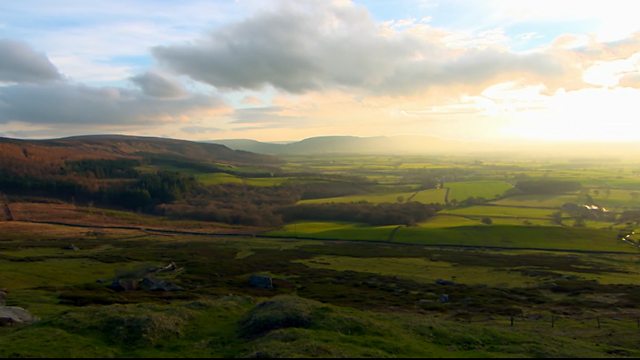In this episode Countryfile – The Fens, Anita and Matt journey to the Fens, the lowest point in the UK, to delve into the unique coexistence of wildlife and people in this extraordinary landscape that lies at and below sea level. Matt begins his adventure by participating in a peatland health check. He learns that the historical draining of the Fens for agricultural purposes has left an indelible mark on the environment, with consequences still felt today. The drained peatlands have subsided significantly, leading to a loss of fertile topsoil and the release of stored carbon, contributing to climate change. However, there is hope on the horizon with the introduction of wet farming techniques known as paludiculture.
These innovative methods offer a sustainable alternative for fenland agriculture, allowing for the cultivation of crops on waterlogged land. Matt explores several groundbreaking trials where farmers are growing reeds, sphagnum moss, and other water-loving plants, which not only support the local ecosystem but also provide economically viable crops.
Meanwhile, Anita embarks on an exhilarating wildlife safari across the Great Fen, a vast and ambitious restoration project aimed at returning large areas of the fenland to their natural state. Armed with binoculars and a keen ear, she surveys the diverse species inhabiting the area. By sight and sound, she identifies a variety of birds, insects, and other wildlife, assessing the success of the restoration efforts. Her journey underscores the importance of these projects in preserving biodiversity and combating the effects of climate change.
Anita’s exploration of the Fens also includes a visit to the historic Wicken Windmill. This heritage landmark stands as a testament to the region’s agricultural history and the ingenuity of past generations. As she tours the windmill, Anita learns about its role in the community, grinding grain and serving as a crucial part of the fenland’s agricultural infrastructure.
In addition to her wildlife and historical exploration, Anita meets with a sound recordist to capture the enchanting birdsong that fills the air. The symphony of avian calls provides a melodic backdrop to the natural beauty of the Fens, highlighting the rich biodiversity that thrives in this unique environment.
Countryfile – The Fens
The journey wouldn’t be complete without a look at the challenges faced by modern farmers in the region. Anita catches up with a local potato farmer who navigates the complexities of cultivating crops in the fertile, yet challenging, peaty soil of the Fens. Despite the difficulties posed by the unique soil conditions, the farmer’s dedication to sustainable practices and innovative techniques showcases the resilience and adaptability of the farming community.
Back in the Cotswolds, Adam is busy tending to his farm, focusing on the breeding ewes. His segment provides a contrasting glimpse into the life of a farmer in a different part of the UK, highlighting the diversity of agricultural practices across the country. Adam’s hands-on approach and commitment to his livestock underscore the universal challenges and rewards of farming.
Throughout this episode, Countryfile offers a comprehensive look at the Fens, celebrating the harmonious relationship between people and nature in this remarkable landscape. The program not only highlights the historical and environmental significance of the Fens but also underscores the innovative solutions being implemented to ensure a sustainable future for this unique region. Through the stories of individuals dedicated to preserving and revitalizing the land, viewers gain a deeper appreciation for the intricate balance required to maintain the health and productivity of the fenlands.
Anita and Matt’s explorations reveal the Fens as a microcosm of broader environmental challenges and opportunities. From the peatlands’ role in carbon storage and climate regulation to the potential of paludiculture in sustainable agriculture, this episode sheds light on the critical importance of thoughtful stewardship of our natural resources. By showcasing the efforts of those working tirelessly to protect and restore the Fens, Countryfile inspires viewers to consider their own role in preserving the environment and supporting sustainable practices.
As the episode concludes, the audience is left with a renewed sense of connection to the natural world and a deeper understanding of the delicate interplay between human activity and environmental health. The Fens, with their rich history and dynamic ecosystem, serve as a powerful reminder of the impact we have on our planet and the steps we can take to ensure its future vitality.
The Fens: A Unique and Diverse Ecosystem Teeming with Life
Welcome to the Fens, a land unlike any other in the United Kingdom. Nestled in the heart of England, this captivating region boasts a remarkable history and an ecosystem teeming with life. As the lowest point in the UK, the Fens have always danced to the rhythm of water, its ebb and flow shaping a landscape that is both enchanting and ever-changing.
The Fens: A Brief Overview
Once a vast expanse of wetlands, the Fens have undergone a transformation over centuries, evolving into a patchwork of fertile farmland and pockets of wild fenland. This unique blend of human intervention and natural forces has created a mosaic of habitats, each harboring its own secrets and stories. From the iconic windmills that dot the horizon to the meandering waterways that crisscross the land, the Fens offer a glimpse into a world where nature and agriculture intertwine.
The Role of Water in Shaping the Fens
Water, the lifeblood of the Fens, has played an instrumental role in sculpting this extraordinary landscape. Historically, the Fens were a vast wetland, a haven for diverse wildlife and a challenge for human settlement. However, through centuries of drainage and engineering, the Fens were transformed into a productive agricultural region, providing sustenance for generations. Yet, the story doesn’t end there. As we look to the future, the Fens are once again embracing the power of water, not to tame it, but to harness its potential for both farmland and wildlife. Innovative projects are underway to restore wetlands, create wildlife corridors, and ensure a sustainable future for this unique ecosystem.
The Great Fen Project: A Beacon of Hope for Wildlife
At the forefront of this movement is the Great Fen Project, an ambitious endeavor to restore and connect fragmented habitats across the Fens. By re-wetting drained land, planting native species, and creating wildlife corridors, the project aims to breathe new life into this ancient landscape. The results are already evident, with a resurgence of biodiversity and a symphony of birdsong filling the air. The Great Fen Project is a testament to the power of collaboration and a beacon of hope for the future of wildlife in the Fens.
Exploring the Wildlife of the Fens: From Bottom-Breathing Beetles to Soaring Raptors
Get ready for an unforgettable journey into the heart of the Fens, where nature’s wonders unfold before your very eyes. This is not your ordinary safari; it’s a Great Fen Safari, where every step reveals a hidden treasure. So, grab your binoculars, put on your explorer’s hat, and let’s embark on an adventure that will leave you breathless.
The Great Fen Safari: Unveiling Hidden Treasures
As the sun rises over the Fens, a symphony of birdsong fills the air, a harmonious chorus that welcomes you to this wildlife wonderland. Keep your eyes peeled, for you might catch a glimpse of a majestic kestrel hovering in the sky, its keen eyes scanning the ground for prey. And if you’re lucky, a magnificent red kite might grace you with its presence, its forked tail a silhouette against the vast sky.
But the wonders don’t stop there. The Fens are home to a diverse array of mammals, each playing a vital role in this delicate ecosystem. The Chinese water deer, with its elegant antlers and gentle demeanor, gracefully navigates the wetlands, while the nimble brown hare darts across the meadows, a blur of fur in the morning light. Every encounter is a reminder of the intricate web of life that thrives in this unique landscape.
Water Beetles: Indicators of a Thriving Ecosystem
Beneath the surface of the Fens’ waterways lies a hidden world of fascinating creatures, including the elusive water beetle. Among them, the King Diving Beetle reigns supreme, a true Fenland specialty. These aquatic insects are not just fascinating in their own right, they’re also invaluable indicators of the ecosystem’s health. Their presence signals clean water and a thriving environment, a testament to the Fens’ ongoing conservation efforts.
These tiny creatures, with their iridescent shells and powerful legs, are masters of survival in this watery realm. They spend their days diving for food, their air bubbles glistening like jewels in the sunlight. And as night falls, they emerge from the depths, their bioluminescent glow illuminating the darkness like tiny stars. It’s a captivating spectacle that few are fortunate enough to witness.
Conclusion: Embracing the Future of the Fens – A Haven for Wildlife and Sustainable Farming
As our journey through the Fens draws to a close, we’re left with a profound appreciation for this extraordinary landscape. It’s a place where nature’s resilience shines through, where diverse ecosystems thrive against all odds. From the vibrant wetlands teeming with life to the vast farmlands that nourish the nation, the Fens stand as a testament to the delicate balance between human activity and the natural world.
The Fens: A Testament to Resilience and Adaptation
The Fens have weathered many storms, both literal and figurative. They’ve been drained, cultivated, and reshaped by human hands, yet their spirit remains unbroken. This unique ecosystem has adapted and evolved, demonstrating an incredible ability to bounce back from adversity. Today, we witness a renaissance in the Fens, as conservation efforts and sustainable practices pave the way for a harmonious coexistence between wildlife and agriculture.
A Call to Action: Protecting and Preserving this Precious Ecosystem
The future of the Fens lies in our hands. We have the power to protect this precious landscape, to ensure that future generations can marvel at its beauty and biodiversity. By supporting conservation initiatives, promoting sustainable farming practices, and raising awareness about the importance of this unique ecosystem, we can all contribute to the well-being of the Fens.
Let us not forget the lessons we’ve learned from this remarkable region. The Fens have shown us that nature is resilient, adaptable, and full of surprises. They’ve reminded us of the importance of water, the interconnectedness of ecosystems, and the power of collaboration. Now, it’s our turn to give back, to embrace the future of the Fens with open arms and a commitment to safeguarding its natural heritage.
F.A.Q. Countryfile – The Fens
Q.: What is the main focus of the Countryfile episode on the Fens?
A.: The main focus of the Countryfile episode on the Fens is to explore the unique coexistence of wildlife and people in this extraordinary landscape that lies at and below sea level. Anita and Matt delve into various aspects of the Fens, including its environmental challenges and innovative solutions.
Q.: What is paludiculture, and how is it relevant to the Fens?
A.: Paludiculture refers to wet farming techniques that involve cultivating crops on waterlogged land. In the Fens, these methods offer a sustainable alternative to traditional farming, helping to restore peatlands and support local ecosystems while providing economically viable crops such as reeds and sphagnum moss.
Q.: What are some of the environmental impacts of the historical draining of the Fens?
A.: The historical draining of the Fens for agricultural purposes has led to significant subsidence of the peatlands, loss of fertile topsoil, and the release of stored carbon, which contributes to climate change. These environmental impacts have had long-lasting effects on the region.
Q.: What is the Great Fen Project, and what are its goals?
A.: The Great Fen Project is an ambitious restoration initiative aimed at returning large areas of the fenland to their natural state. Its goals include re-wetting drained land, planting native species, creating wildlife corridors, and enhancing biodiversity to create a more sustainable and thriving ecosystem.
Q.: How does the episode highlight the challenges faced by modern farmers in the Fens?
A.: The episode highlights the challenges faced by modern farmers through Anita’s interaction with a local potato farmer who deals with the complexities of cultivating crops in the fertile yet challenging peaty soil of the Fens. The farmer’s dedication to sustainable practices and innovative techniques showcases the resilience and adaptability of the farming community.
Q.: What historical landmark in the Fens does Anita visit, and what is its significance?
A.: Anita visits the historic Wicken Windmill, a heritage landmark in the Fens. This windmill is significant for its role in the region’s agricultural history, grinding grain and serving as a crucial part of the fenland’s agricultural infrastructure.




